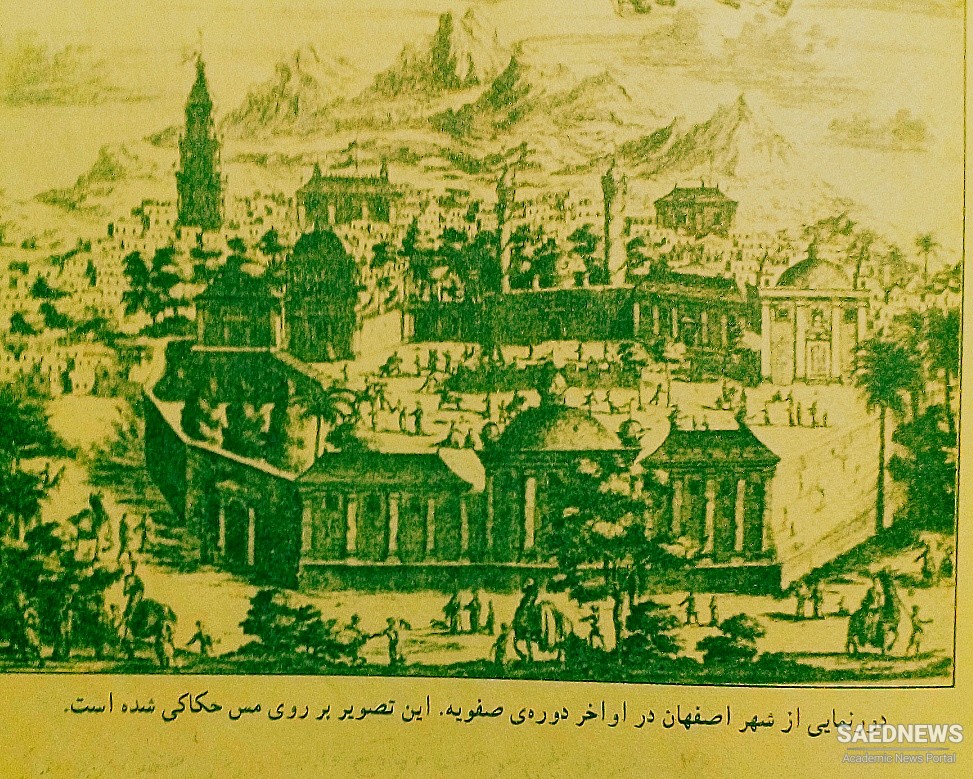On the pass leading into Armenia, which was covered with deep snow, Chardin suffered from “a terrible Dysentery, which forc’d me to alight altogether; and then two men held me up as I went.” He crossed this range with much difficulty, cured his complaint by drinking hot coffee, and traversing the treeless plains of Armenia, reached its capital Erivan. Again he gives a valuable account of the country and of current events, while his description of the Governor is delightful.
He refers to Mount Ararat, which he saw from a distance, and states that the Armenians have a tradition that the Ark still rests upon its summit and “that never any Body could ascend to the Place where it rested; and this they firmly believe upon the Faith of a Miracle.” During his stay at Erivan, Chardin was again invited to a wedding and indulges in a dissertation on marriage, temporary marriage and concubinage, giving amusing stories to illustrate his theme. He sums up his opinion as follows: “Nay we may say in General, that the Matches are more happy in a Country, where the Men and Women never see one another, then when the Women are so frequently seen and courted. And the Reason is plain. For they that see not another Man’s wife, lose less suddenly the Affection which they have, or ought to have, for their own.”
Chardin sold some of his jewelry, being bested in the deal by the astute Governor and, after spending the Persian New Year’s Day (21st March) at Erivan, he continued his long journey to Isfahan. He refers to the ruined state of Nachivan. This was due to the deliberate policy of Shah Abbas, who sought to protect Persia against Turkish invasions by the creation of a desert area between the two countries, the population of this part of Armenia having been transplanted to Mazanderan, where it had been destroyed by malaria.
Crossing the swift Aras, Chardin entered Persia proper and spent some days at Tabriz, which was then, as it remains to-day, the second city of the empire. He gives a detailed account of its buildings, many of which were in ruins, and of its sufferings in previous generations at the hands of the Turks, “who committed therein all manner of Inhumanity, even to an Excess unheard of before.” Towards the end of April, the journey was resumed in the company of the Provost of the Merchants, and Chardin’s description shows how he revelled in the short-lived spring greenery.
Skirting Kazvin, the party made for Kum, celebrated as being the burial-place of Fatima, daughter of the Imam Musa. More fortunate than myself, Chardin was permitted to enter the precincts freely and to make sketches. His description of the tomb runs: “It is over-laid with Tiles of China, painted alamoresca, and overspread with Cloth of Gold that hangs down to the ground on every side. It is enclosed with a Grate of Massy Silver ten foot high, distant half a foot from the Tomb; and at each Corner crown’d as it were with large Apples of fine Gold. . . . Several breadths of Velvet hung about the inside of the Grate, hide it from the view of the People: so that only Favor or Money can procure a sight of it.”
Kum was also the burial-place of the two last Safavi monarchs and, with characteristic thoroughness, Chardin gives a translation of an inscription in letters of gold which runs round the gallery of the tomb of Abbas II. It consists of eulogies of Ali, from which I cull the following: “To speak something in thy Praise, we must needs say, that Nature is only adorn’d and enrich’d by thee. Had not thy perfect Being been in the Idea of the Creator, Eve had been eternally a Virgin, and Adam a Batchelor.”


 Jean Chardin's Travels in Persia
Jean Chardin's Travels in Persia














































